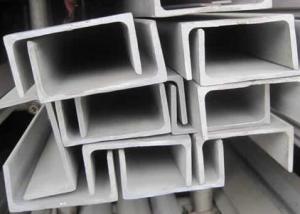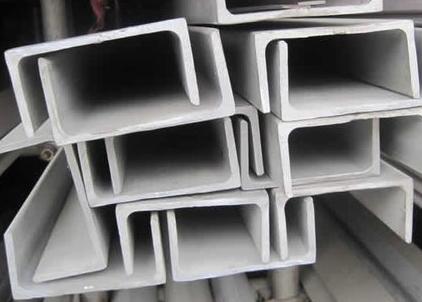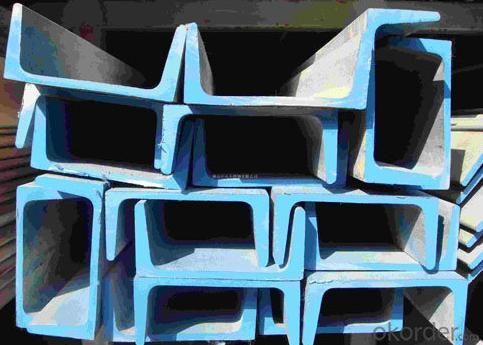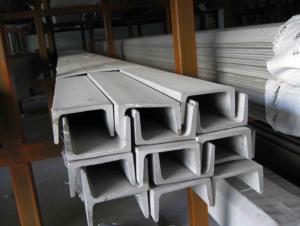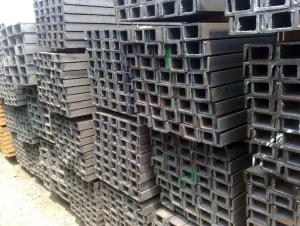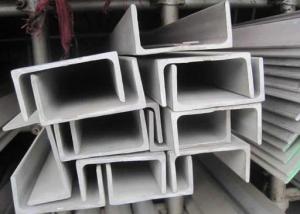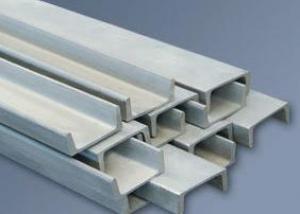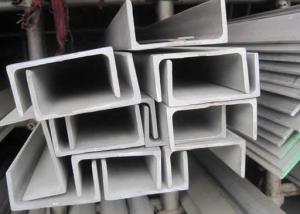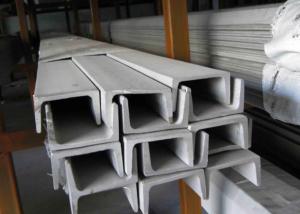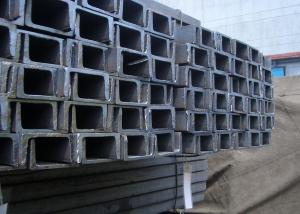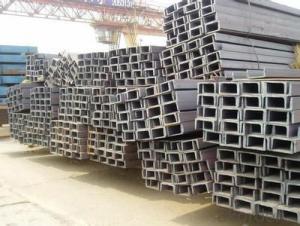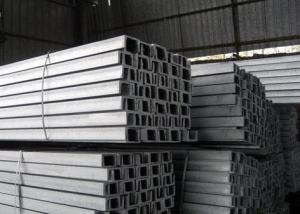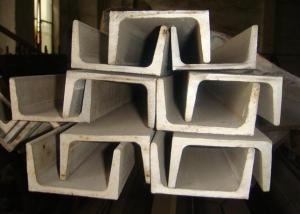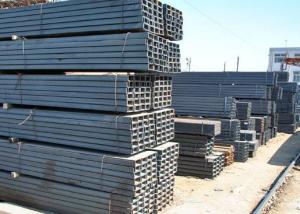201 Stainless Steel Channels
- Loading Port:
- China Main Port
- Payment Terms:
- TT or LC
- Min Order Qty:
- 5 Tons m.t.
- Supply Capability:
- 1000 Tons Per Month m.t./month
OKorder Service Pledge
OKorder Financial Service
You Might Also Like
Stainless Steel Channel
1.Size: 3mm to 24mm Thickness
2.Material:SUS201,202,301,304,304L,316,316L ,321 etc.
3.Length: 4m to 6m,or according to the customer's requirement
4.Standard: AISI,JIS,GB,DIN
5.Finish: Cold Drawn ,hot rolled & Polishing
6.Testing: Each heat number and batch must be tested for both chemical and mechanical properties
7.Application: Produce screw and nut, engine parts, indoor and outdoor decorating,etc.
|
Size (mm) |
Thickness (mm) | ||||||||
|
H×B |
3 |
4 |
5 |
6 |
7 |
8 |
9 |
10 |
12 |
|
Mass (Kg/m) | |||||||||
|
40×20 |
1.79 |
|
|
|
|
|
|
|
|
|
50×25 |
2.27 |
|
|
|
|
|
|
|
|
|
60×30 |
2.74 |
3.56 |
4.37 |
5.12 |
|
|
|
|
|
|
70×35 |
3.23 |
4.21 |
5.17 |
6.08 |
|
|
|
|
|
|
80×40 |
3.71 |
4.84 |
5.96 |
7.03 |
|
|
|
|
|
|
90×45 |
4.25 |
5.55 |
6.83 |
8.05 |
|
|
|
|
|
|
100×50 |
4.73 |
6.18 |
7.62 |
8.98 |
10.3 |
11.7 |
13 |
41.2 |
|
|
120×60 |
|
|
9.2 |
10.9 |
12.6 |
14.2 |
|
|
|
|
130×65 |
|
|
10.1 |
11.9 |
13.8 |
15.5 |
17.3 |
19.1 |
|
|
140×70 |
|
|
|
12.9 |
14.9 |
16.8 |
18.8 |
20.7 |
|
|
150×75 |
|
|
|
13.9 |
16 |
18.1 |
20.2 |
22.2 |
26.3 |
|
160×80 |
|
|
|
14.8 |
17.1 |
19.3 |
21.6 |
23.8 |
28.1 |
|
180×90 |
|
|
|
16.7 |
19.4 |
22 |
24.5 |
27 |
32 |
|
200×100 |
|
|
|
18.6 |
21.6 |
24.5 |
27.4 |
30.2 |
35.8 |
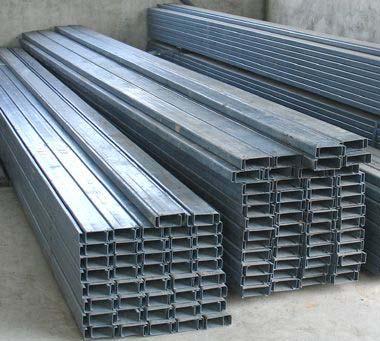
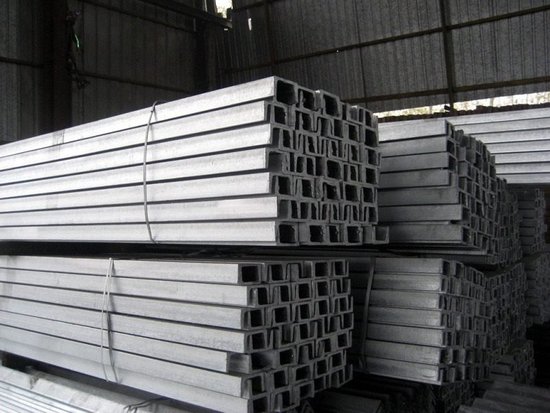
- Q: Are stainless steel channels suitable for corrosive or acidic environments?
- Yes, stainless steel channels are highly suitable for corrosive or acidic environments due to their inherent corrosion resistance properties. The presence of chromium in stainless steel forms a protective oxide layer, which prevents the material from reacting with corrosive substances and acids, making it a reliable choice for such environments.
- Q: Are stainless steel channels resistant to solvents?
- Stainless steel channels, on the whole, exhibit resistance to solvents. The corrosion and chemical resistance of stainless steel is well-known, rendering it appropriate for a range of industrial uses that involve solvents. The passive protective layer formed by the chromium content in stainless steel aids in thwarting solvents from infiltrating the material and causing harm. Nevertheless, the degree of resistance may differ based on the particular type and grade of stainless steel. To ascertain compatibility with solvents specific to your application, it is advisable to consult the manufacturer or conduct comprehensive testing.
- Q: Can stainless steel channels be used in the construction of power transmission towers?
- Yes, stainless steel channels can be used in the construction of power transmission towers. Stainless steel has several properties that make it suitable for this application. Firstly, stainless steel is highly resistant to corrosion, which is important as power transmission towers are often exposed to harsh weather conditions. Additionally, stainless steel has high strength and durability, allowing it to withstand the weight and forces exerted on the towers. Moreover, stainless steel channels can be easily fabricated and assembled, making them an efficient choice for construction. Overall, stainless steel channels provide a reliable and long-lasting solution for power transmission tower construction.
- Q: Are stainless steel channels suitable for hygienic or cleanroom environments?
- Stainless steel channels are highly suitable for hygienic or cleanroom environments due to their corrosion resistance and durability. In these environments, cleanliness and hygiene are paramount. Stainless steel channels, being non-porous, do not have any cracks or crevices that can harbor bacteria, dirt, or other contaminants. This feature allows for easy cleaning and maintenance, reducing the risk of contamination and ensuring a high level of hygiene. Additionally, stainless steel exhibits inherent resistance to chemicals, making it appropriate for environments where cleaning agents or disinfectants are frequently used. It can also withstand high temperatures and endure frequent washdowns or sterilization processes without corroding or degrading. Furthermore, stainless steel possesses excellent strength and structural integrity, guaranteeing that the channels can support heavy loads or equipment without bending or warping. This aspect is particularly crucial in cleanroom environments where precision and stability are of utmost importance. To sum up, stainless steel channels offer an exceptional choice for hygienic or cleanroom environments due to their corrosion resistance, non-porous nature, chemical resistance, and strength. They provide a sterile and clean environment while ensuring durability and reliability.
- Q: Can stainless steel channels be used in structural applications?
- Yes, stainless steel channels can definitely be used in structural applications. Stainless steel is known for its high strength, corrosion resistance, and durability, making it an excellent choice for structural components. Stainless steel channels are commonly used in construction projects that require structural support, such as building frames, bridges, and industrial structures. These channels provide structural stability and can withstand heavy loads and extreme weather conditions. Additionally, stainless steel channels offer a sleek and modern aesthetic, making them a popular choice in architectural and design applications as well.
- Q: What are the cost considerations for stainless steel channels?
- The cost considerations for stainless steel channels primarily include the grade or alloy of stainless steel chosen, the size and dimensions of the channels, and any additional processes or finishes required. Higher-grade stainless steel alloys such as 304 or 316 tend to be more expensive than lower-grade options. Larger or custom-sized channels may also result in higher costs due to material usage. Processes like cutting, bending, or welding, as well as specific finishes like polishing or coating, can also contribute to the overall cost.
- Q: Are stainless steel channels suitable for railway infrastructure?
- Stainless steel channels are a suitable option for railway infrastructure due to their excellent resistance to corrosion. This characteristic makes stainless steel highly appropriate for outdoor applications like railway infrastructure. By providing structural support and stability, stainless steel channels ensure the durability and longevity of railway infrastructure. Their high strength-to-weight ratio is also advantageous as it allows them to support heavy loads and withstand the dynamic forces experienced by railway tracks. Furthermore, stainless steel channels are easy to install and maintain, which is crucial for the efficient operation and safety of the railway system. In conclusion, stainless steel channels offer multiple advantages that make them an appropriate choice for railway infrastructure.
- Q: What are the factors influencing the availability or lead time for stainless steel channels?
- There are several factors that can influence the availability or lead time for stainless steel channels. 1. Supply and demand: The overall demand for stainless steel channels can impact their availability. If the demand is high and the supply is limited, it can lead to longer lead times as manufacturers may need more time to produce and deliver the products. 2. Raw material availability: Stainless steel is made from various raw materials, including iron ore, chromium, and nickel. Any fluctuations or disruptions in the supply of these raw materials can affect the availability of stainless steel channels. For example, if there is a shortage of nickel, which is a key component in stainless steel, it can lead to longer lead times as manufacturers may struggle to source enough raw materials. 3. Production capacity: The manufacturing capacity of stainless steel channel producers can also impact availability. If the manufacturers are operating at full capacity or are facing production issues, it can result in longer lead times as they may not be able to produce enough channels to meet the demand. 4. Lead time for fabrication: Stainless steel channels often require additional fabrication processes, such as cutting, bending, or welding, to meet specific customer requirements. The lead time for these fabrication processes can also influence availability. If there is a backlog or delay in the fabrication process, it can cause delays in delivering the finished channels. 5. Transportation and logistics: The availability of transportation and logistical challenges can impact the lead time for stainless steel channels. If there are disruptions in transportation, such as port congestion, shipping delays, or customs clearance issues, it can result in longer lead times as the channels may take longer to reach their destination. 6. International trade policies: Trade policies and regulations can also influence the availability of stainless steel channels. Tariffs, import/export restrictions, or trade disputes can affect the flow of stainless steel channels between countries, potentially leading to longer lead times or limited availability. Overall, a combination of supply and demand dynamics, raw material availability, production capacity, fabrication lead times, transportation and logistics, and international trade policies can all play a role in influencing the availability or lead time for stainless steel channels.
- Q: What are the properties of stainless steel channels?
- Stainless steel channels are highly sought after in a variety of industries and applications due to their distinct properties. To begin with, stainless steel channels are renowned for their exceptional resistance to corrosion. This is attributed to the presence of chromium in the steel composition, which creates a thin protective oxide layer on the surface. This layer acts as a barrier, safeguarding the steel from rust or staining. As a result, stainless steel channels are ideal for environments exposed to moisture, chemicals, or harsh weather conditions. Another notable property of stainless steel channels is their remarkable strength and durability. Stainless steel is an incredibly robust material, enabling the channels to withstand heavy loads and impacts without deforming or breaking. This renders them suitable for applications that necessitate structural support or where the channels will endure significant stress. Moreover, stainless steel channels exhibit excellent heat and fire resistance. They possess a high melting point and are capable of enduring high temperatures without compromising their structural integrity. This characteristic makes stainless steel channels suitable for industries such as construction, automotive, and aerospace, where exposure to extreme heat or fire hazards is probable. Additionally, stainless steel channels offer exceptional aesthetic appeal. They possess a sleek, glossy surface and are available in various finishes, such as brushed, polished, or matte. Consequently, they are visually appealing and appropriate for architectural applications, including decorative trims, handrails, or frames. Furthermore, stainless steel channels excel in terms of hygiene. They are non-porous and easy to clean, making them well-suited for applications in the food and beverage industry, pharmaceuticals, or healthcare facilities. Stainless steel is also resistant to bacterial growth, making it a hygienic option for environments where cleanliness is of utmost importance. In conclusion, stainless steel channels provide a range of desirable properties, including high corrosion resistance, strength and durability, heat and fire resistance, aesthetic appeal, and hygiene. These properties establish stainless steel channels as a versatile and reliable choice for various industries and applications.
- Q: Are stainless steel channels suitable for high-traffic areas?
- Yes, stainless steel channels are suitable for high-traffic areas. Stainless steel is a durable and corrosion-resistant material, making it ideal for areas with heavy foot traffic. It can withstand constant use and abuse, resisting scratches, dents, and wear. Additionally, stainless steel has a high load-bearing capacity, making it suitable for supporting heavy loads in high-traffic areas such as walkways, staircases, and industrial environments. Moreover, stainless steel channels are easy to clean and maintain, ensuring a hygienic and safe environment for users. Overall, stainless steel channels are a reliable choice for high-traffic areas due to their durability, resistance to damage, and low maintenance requirements.
1. Manufacturer Overview
| Location | Jiangsu, China |
| Year Established | 2010 |
| Annual Output Value | above US$8 million |
| Main Markets | East Asia, Middle East, West Europe |
| Company Certifications |
2. Manufacturer Certificates
| a) Certification Name | |
| Range | |
| Reference | |
| Validity Period |
3. Manufacturer Capability
| a) Trade Capacity | |
| Nearest Port | Shanghai |
| Export Percentage | |
| No.of Employees in Trade Department | above 50 people |
| Language Spoken: | English, Chinese, Arabic |
| b) Factory Information | |
| Factory Size: | about 15000 square meter |
| No. of Production Lines | above 4 |
| Contract Manufacturing | OEM Service Offered,Design Service Offered |
| Product Price Range | Average |
Send your message to us
201 Stainless Steel Channels
- Loading Port:
- China Main Port
- Payment Terms:
- TT or LC
- Min Order Qty:
- 5 Tons m.t.
- Supply Capability:
- 1000 Tons Per Month m.t./month
OKorder Service Pledge
OKorder Financial Service
Similar products
Hot products
Hot Searches
Related keywords

